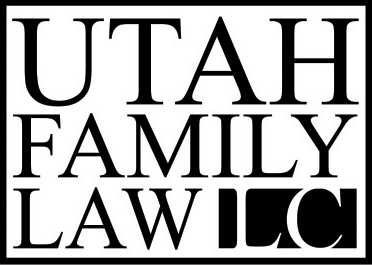Of the Utah domestic relations commissioners and judges who treat fathers as second-class parents in making temporary and permanent custody and parent-time rulings, they practically gush about the standard for determining those rulings: “primary caregiver”.
This standard was articulated in the landmark Utah case of Pusey v. Pusey, 728 P.2d 117, 121 (Utah 1986).
Pusey ostensibly rejected the “maternal preference” doctrine as unconstitutional sexual discrimination against fathers and noted that “’[b]y arbitrarily applying a presumption in favor of the mother and awarding custody to her on that basis, a court is not truly evaluating what is in the child’s best interests.’” (Pusey, citing Hyde, Child Custody in Divorce, 35 Juv. & Fam.Ct.J. 1 at 10 (Spring 1984)
Pusey then ostensibly replaced the maternal preference with a new doctrine:
We believe that the choice in competing child custody claims should instead be based on function-related factors. Prominent among these, though not exclusive, is the identity of the primary caretaker during the marriage. Other factors should include the identity of the parent with greater flexibility to provide personal care for the child and the identity of the parent with whom the child has spent most of his or her time pending custody determination if that period has been lengthy. Another important factor should be the stability of the environment provided by each parent.
Clearly, if the “primary caregiver” doctrine (as it has come to be concisely labeled) would be superior to the discriminatory maternal preference doctrine (but still not a fair standard—see infra) if, and only if, it is applied in accuracy and fairness. Is it? No, not usually.
Instead, many Utah courts apply the “primary caregiver” analysis as the maternal preference in disguise.[1] The do this in many ways.
Some courts presume that the primary caregiver is the mother, and it all goes downhill from there.
Other courts persist in applying the maternal preference by treating “caregiver” as synonymous only with what mothers do in the majority of families. Personal care and attention is “caregiving” while providing financially for a child’s needs (which is usually what enables the stay-at-home parent to provide all that personal care and attention), taking the kids fishing, or coaching Little League is deemed to be one of three basic things: 1) not “substantive” or “core” caregiving; 2) caregiving, but an inferior form of it; or 3) caregiving that can be substituted with cash payments to the mother “real” or “true” primary caregiver.
Other courts will treat a mother who was the primary caregiver pre-divorce and pre-separation as though her circumstances post-decree or post-separation will not change in the slightest, once the father is no longer living under the same roof full-time with her and the children. This is incredibly disingenuous when the same court that indulges in such fantasy acknowledges in the process of calculating child support that the previously unemployed mother will be working part- or full-time to earn a living but does not account for how that employment will take “caregiving” time and/or attention away from the children. Some courts lamely work around this inconvenient fact by presuming that Mother will—by virtue of her selflessly and self-sacrificingly being the primary caregiver—rise to the occasion and, in keeping with her primary caregiver ethic, “heroically balance caregiving and work” so that the children will suffer no change in the quantity or quality of caregiving. These same courts derisively reject the notion that a father could successfully balance full-time employment and childrearing. When the fact that widowers with young children exist (and have since the dawn of time) is cited to refute that disgustingly discriminatory idea, courts just shrug it off. The discriminatory lies “first, that the mother almost invariably served as a child’s primary caregiver prior to divorce; and second, that biologically a child was simply better off with a mother”[2] is still alive and well.
What is to be done? First, we need to ensure we frame the issue correctly. I submit that, at its core the flaw in the “primary caregiver” doctrine does not lie with being inherently discriminatory against fathers but instead derives 1) from marginalizing the value and necessity of the “secondary caregiver”; and 2) from failing to see the value in dividing the caregiving burdens (sharing those burdens) as equally as possible between two available caregivers (also known as “parents”) for the benefit of children and parents alike. As I alluded in the previous paragraph, the idea who was the “primary caregiver” when the marriage was intact will continue to function the same as and as well as she did post-separation and post-decree is patently flawed, as is the idea that the secondary caregiver pre-separation and pre-decree cannot and will not assume more personal caregiving responsibilities. As has been said before, except in circumstances where a parent is unfit or circumstances beyond his (or her) control render that parent—despite the best of intentions—unable to care adequately for the children, the “best parent” is both parents. Far too often courts refuse to give this concept so much as a losing chance.
Utah Family Law, LC | divorceutah.com | 801-466-9277
[1] “Disguise” is a word so perfectly laden with deep and proper meaning. Research its etymological origins and you learn this (Disguise – Etymology, Origin & Meaning):
dis-
word-forming element of Latin origin meaning 1. “lack of, not” (as in dishonest); 2. “opposite of, do the opposite of” (as in disallow); 3. “apart, away” (as in discard)
guise(n.)
late 13c., “style or fashion of attire,” from Old French guise “manner, fashion, way,” from Frankish *wisa or some similar Germanic source, from Proto-Germanic *wison “appearance, form, manner,” from *wissaz (source also of Old High German wisa “manner, wise”), from PIE root *weid- “to see.”
[2] See Justice Zimmerman’s concurrence in Pusey.
